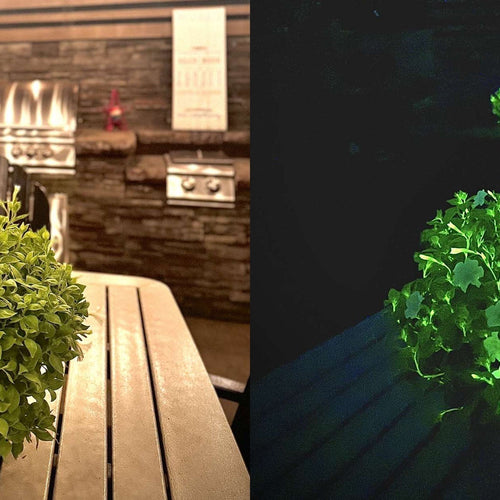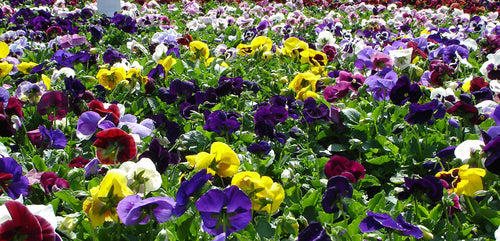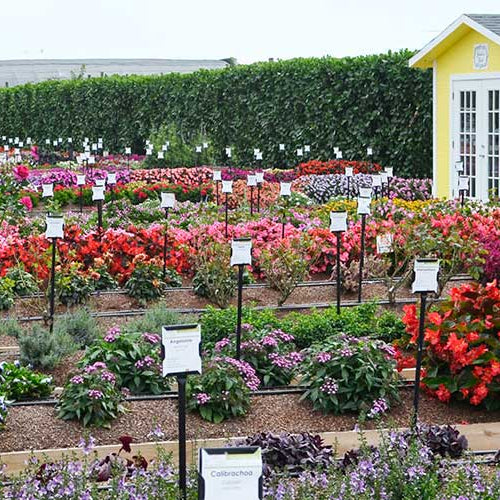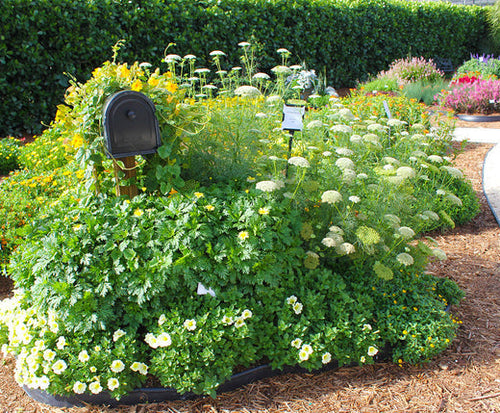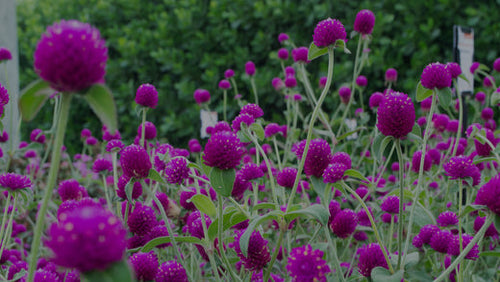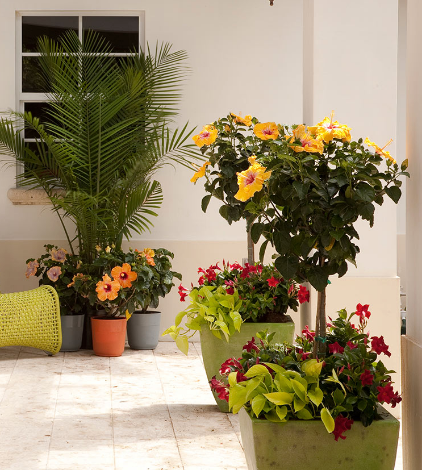
Put Your Best Foot Forward
You know that old saying—Put Your Best Food Forward. That’s what this homeowner did by planting the small ribbon of ground between a white picket fence and the sidewalk with a romantic mix of roses, delphiniums, and foxgloves. Quintessential cottage garden perennials, these tall beauties are ideal for tight spaces. Growing 4- to 5-feet tall, delphiniums and foxgloves present a showy vertical wall of color. In this cute cottage garden, lower-growing plants such as lobelia, pansy, and roses, fill in the spaces below the taller plants. What a welcome sight! Planting tip: Keep tall plants, such as foxglove or delphinium, standing straight by loosely attaching their stems to the fence with twine. Or you can stake them.

Fence Line Refresh
Mowing around fences is a hassle, so why not create a bed on both sides so you never have to pull out your trimmer again. Here, a slim bed of blue salvia looks over the fence at a bed of rhubarb. The salvia makes a pretty border and because its an annual variety, you can change the color scheme every spring by selecting annuals of another color. If you want a permanent planting of salvia, choose a perennial salvia version such as ‘May Night’. Planting tip: If you want a mass of seamless color, stagger the flowers rather than planting them lined up in long straight rows.

Plant in Threes
A narrow strip of yard, say between your place and your neighbors, is the ideal spot for a garden because both you and your neighbors can enjoy it. To maximize impact in a small space, repeat a series of the same plants up and down the border to create a tapestry of color. Here, a 36-inch wide garden is planted with just three species repeated in a loose pattern. Persian shield, New Guinea impatiens, and caladium all offer different leaf shapes. But their unifying factor is the color pink. Persian shield leaves sport pink veins, caladium leaves have splashes and splotches of pink, and the New Guinea impatiens accentuate the color theme with round pops of pink. A threesome garden is easy to plan and plant and it looks this great all summer. Planting tip: Set the pots of plants on the ground before you plant to plan the the right color combinations.

Small Spaces Yield Big Color
You don’t need a lot of space at the edge of your yard to make a big colorful impact. In this yard, there are several small garden spaces whose sum make a beautiful total. In the front of a cheery white picket fence is a welcoming street-side garden filled with blowsy white roses, pink centranthus (aka Jupiter’s beard), and orange nasturtiums. Inside the yard, fronting the porch, is another narrow garden with that draws the eye into the house. Along the walkway, a narrow planting bed—less than a foot wide in some places—is edged with bright blooming annuals such as snapdragons and nasturtiums for consistent color from spring through autumn. Planting tip: Add window boxes to continue a yard’s color theme. Here, white window boxes are filled with red, white, and blue annuals, such as geraniums, pansies, and campanula to add more color.

Mix Annuals and Perennials for Ongoing Colo
Annuals are the workhorses of the garden, blooming all season long—from spring through autumn. They pair perfectly with perennials that appear in specific times in the gardening season. In this border garden, a white picket fence is an ideal backdrop for a narrow bed that bursts with color. Drifts of annual color at the ground level (purple lobelia and white sweet alyssum) move the eye along. Behind these low edgers are pink fleabane and purple petunias. Tree roses with big headed blooms and pink foxglove add tall elements to the border. Planting tip: Planting a narrow border at the edge of a property is easy when you use a mix of low, mid-range, and tall plants. The combination makes the space feel bigger than it is.

Create an Urban Oasis
Urban gardens -- although small -- brighten even the tiniest spaces around doorways and strips between sidewalks and the street. In this street-side downtown Chicago planter, the theme is hot color. New Guinea impatiens and begonias add flower power. A canna centerpiece looks stunning with its big leaves (even before its spiky flower is in bloom). And red coleus offers consistent color and contrast. Amid the concrete and high rises, flowering and foliage plants have a way of bringing us all back to the splendors of the Earth. Planting tip: Pick a unified color scheme to create a custom look.

Single Color Study
A simple way to create a beautiful border at the edge of your yard is to adopt a color theme, then mix it up with the all the options within that hue. In this full sun border garden, sunny yellow sets the tone. Daylilies (try Stella D’Oro), lysimachia, and yarrow, add different tones of brightness and texture within the yellow theme. Choose perennials that bloom at the same time for big bursts of border color. But don’t forget those that bloom earlier and later in the season. Spring-flowering yellow perennials include viola, hellebores, and daffodils. Later in autumn, enjoy yellow perennials such as goldenrod and mums. Planting tip: Mulch well around the base of perennial plantings to help conserve soil moisture in hot weather.

Flower Studded Stairway
Sometimes concrete steps aren’t as pretty as we’d like them to be. But planting a wide swath of colorful annuals alongside can transform a nondescript stairway into a beautiful garden. (Oh, and the flowers can pull the eye away from the less-than-beautiful concrete.) Complementary colors yellow and purple (opposite of each other on the color wheel) are always a winning combination. Big headed yellow marigolds add bright accents amid the dark purple flower umbels of heliotrope. Marigolds and heliotrope bloom non-stop and are also fragrant. Planting tip: You can’t go wrong by use complementary color combos. Try blue/orange and red/green.





